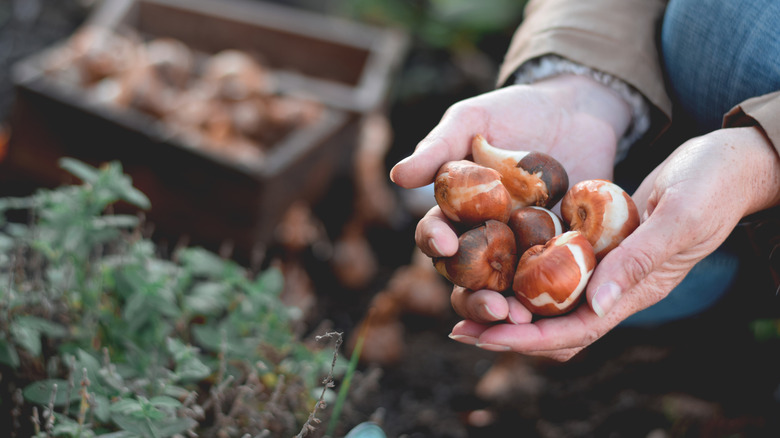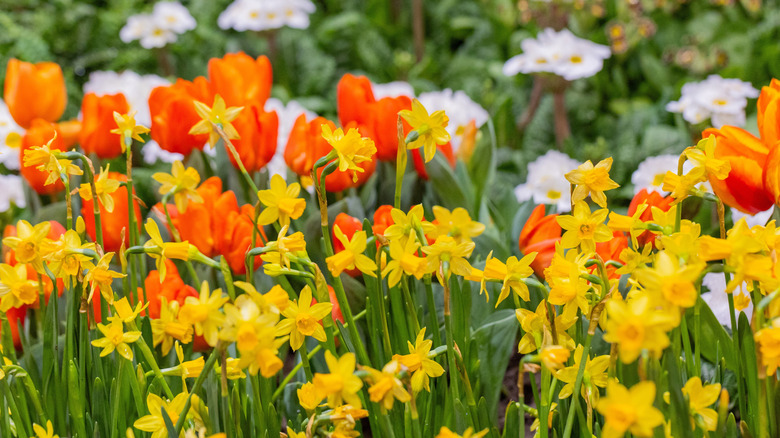Plant Daffodil Bulbs In October For Beautiful Blooms In The Spring
We may receive a commission on purchases made from links.
If the fall to-do list for your garden is getting longer than your arm, it's time to prioritize. Fall is a great time for yard and garden chores, but as winter gets closer, it's smart to focus on tasks that will have the biggest payout in the spring. Daffodils (Narcissus species) are one of the most popular flower bulbs to plant in autumn, and with the turning weather, planting them in October for a burst of color early in spring is one of those high-priority tasks that can't wait.
Not only will daffodils brighten up your yard after those long winter days, but they also offer numerous benefits to your garden's ecosystem. By blooming early, they provide one of the first food sources for pollinators. They're also deer-resistant and hardy in Zones 3 to 9, making them a good choice for beginners. And with over 13,000 varieties to choose from, you can easily find ones that suit your color palette and climate.
To maximize bloom appeal in spring, plant your fall bulbs strategically so that the tallest flowers are in the back. Daffodils pair well with tulips, hyacinths, and crocuses, and positioning them in layers will add interest. Daffodils also perform well in drift plantings, which is a good way to make your yard visually interesting from a distance. In addition to making a colorful impact in the spring, mass plantings are easier to care for and bring out the textures of the daffodil plants throughout the year.
How to plant daffodil bulbs in the fall
To plant daffodils in the fall, choose a sunny location and purchase your bulbs. They're widely available at home improvement stores at this time, but you can also order online if you're looking for a special variety. When shopping for them in person, choose large, firm bulbs. Planting should occur about 2 to 4 weeks before the ground freezes, but before that, you should consider adding soil amendments.
No matter what was previously growing in your new daffodil bed, the soil could probably use a bit of organic matter for the best blooms in the spring. Adding natural materials like compost, mulch, and old straw is a good way to improve your soil's structure. Daffodils prefer well-draining soil, and incorporating these materials now will give them the best possible growing conditions.
Whether you choose a no-till gardening technique or you prepare your garden bed with traditional digging methods, planting daffodils isn't difficult. Use a daffodil planting tool like the Berry&Bird Bulb Planter to make it easy to achieve a consistent depth. Daffodils need to be planted about 4 to 6 inches deep, usually two to three times the height of the bulb, depending on their size. Once they're planted, water them in and cover lightly with mulch. The cheerful faces of daffodils in the spring might seem like a long way off, but the truth is, they're closer than you think.

